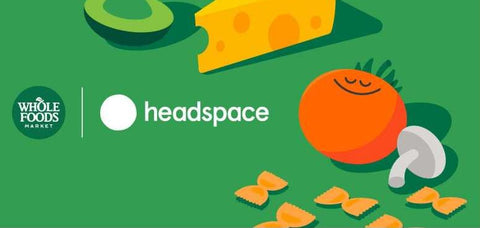Food provides us with nutrients, keeps us energized, and can even help us fend off disease. But those benefits aren’t true for all foods. In fact, quite the opposite is the case in some instances; certain foods can actually cause health issues, inflammation, and drain you of energy. Perhaps even worse is that consuming these foods in high doses can put a strain on one of the major players in the digestive process: your stomach.
Many overprocessed foods are loaded with an amalgamation of unhealthy ingredients that can cause irritation, exacerbate preexisting stomach problems, or even be the cause of new tummy troubles.
To make things even more complicated, some foods that provide incredible benefits to some people may not do the same for others. Due to some stomach-related health issues, like gastroesophageal reflux disease (GERD) or irritable bowel syndrome (IBS), certain healthy foods contain compounds or nutrients that may irritate the affected person’s stomach, triggering irritation, inflammation, and discomfort. (The good news is that if your gut is healthy, most foods eaten in normal amounts won’t irritate it, say experts.)
Taking care of your gut is paramount when it comes to your overall health—making sure your digestive system is functioning at its prime ensures your body can adequately process food and give you the nutrients and energy you need. So come along for a tour of common eats that can spell tummy troubles. Read on, and for more on healthy eating, don’t miss these 25 Unhealthiest Habits for Your Digestion. 1
Refined Carbs

The simple carbohydrates in refined grains and highly processed foods like chips, white bread, and soda, can cause bloating, gas, and cramping. What you may not feel is the gut inflammation from these poor food choices. “Gut microbes love sugary foods, so they thrive and can overcome the good microbes,” says Harvard psychiatrist and trained chef, Uma Naidoo, MD. “When your good microbes become overwhelmed, they cannot help you and this leads to gut inflammation and neuroinflammation. An unhappy gut causes a sad, anxious mood,” says the author of This Is Your Brain on Food.
RELATED: Sign up for our newsletter to get daily recipes and food news in your inbox! 2
Soup, Ham, and Other High-Sodium Foods

The average can of soup contains more than 700 milligrams of sodium. A ham sandwich packs over 1,117 milligrams. TGI Fridays Chicken Parm Pasta wins the prize with 4,130 mg of sodium; that’s almost double the 2,300 mg recommended limit per day! “High salt diets are known to harm the stomach lining, raising the risk for ulcers and even stomach cancer,” says physician-scientist William W. Li, MD, author of Eat to Beat Disease: The New Science of How Your Body Can Health Itself.https://57ff1724402131002216e2574d1a0fef.safeframe.googlesyndication.com/safeframe/1-0-38/html/container.html 3
Low-Fat Yogurt

You know that people with lactose intolerance can get stomach upset when eating dairy products like milk, cheese, and yogurt, but did you know that the high sugar content of some dairy items can upset your stomach, too? Take low-fat yogurt, for example. A single cup can contain upwards of 6 teaspoons or more than 24 grams of sugar. So much for a healthy snack; it’s more like cotton candy. Too much sugar can cause acute problems like bloating, constipation, irritable bowel syndrome, and diarrhea. And worse. “Diets high in sugar have been shown to have the potential to decrease the microbial diversity in the gut after just one week’s time,” says Jinan Banna, PhD, RD, an associate professor of nutrition at the University of Hawaii at Mānoa. “Loss of microbial diversity in the gut microbiota has been shown to be associated with most of the human diseases affecting westernized countries.” Those maladies include inflammatory bowel disease, obesity, cancer, and autism, according to the report “Impacts of Gut Bacteria on Human Health and Diseases” in the International Journal of Molecular Sciences. 4
Spicy Foods

Spicy foods may be good for your health for some people, except when they trigger “burning diarrhea.” While a study in BMJ noted that people who consumed spicy foods almost every day of the week had a 14% risk reduction in total mortality compared to those who rarely ate chili peppers, another study in Neurogastroenterology & Motility suggested that the more spicey food eaten (especially if you are young or female), the more common nasty gastrointestinal symptoms tend to be. Foods containing capsaicin, the ingredient that gives chilies their fire, can irritate the lining of the stomach, triggering nausea, vomiting, abdominal pain, and diarrhea that burns. 5
Fried Foods, Orange Juice, Coffee, Alcohol, Etc.

The list of foods that are irritative to the stomach and may make gastritis worse is long and varied, according to surgical gastroenterologist Madhan Kumar, MD, of iCliniq.com. “The caffeine in coffee is irritating to the stomach lining, but even healthy choices like very acidic foods like citrus fruits, orange juice, and tomato juice can irritate the stomach lining,” he says. Other foods on the long list of potential irritants include fried foods, dairy products, carbonated beverages, fatty foods, chocolate, and alcohol, among others. Anything that’s deep-fried, such as French fries and chicken nuggets can trigger heartburn and acid reflux.https://57ff1724402131002216e2574d1a0fef.safeframe.googlesyndication.com/safeframe/1-0-38/html/container.html 6
FODMAP Carbs

These carbohydrates can cause gas pain and bloating in people who are sensitive to them, especially those suffering from irritable bowel syndrome. FODMAP stands for Fermentable Oligosaccharides, Disaccharides, Monosaccharides, And Polyols, which are short-chain sugars that the small intestine absorbs poorly, according to Johns Hopkins Medicine. “Many whole grains and fruits and vegetables contain these compounds so a low FODMAP diet can be quite limiting in foods that are needed and nutritious,” says food scientist Julie Miller Jones, PhD, emeritus professor of nutrition at St. Catherine University. “For this diet, many foods are cut out for several weeks and a person adds back foods one at a time to see what the offending foods are.” Some of the most common FODMAP compounds are fructose (found in fruits, vegetables, and added sugars like table sugar and high fructose corn syrup), lactose (in milk and other dairy products), fructans (in many grains, including wheat and barley), galactans (prevalent in legumes), and polyols (in sweeteners like sorbitol and xylitol as well as some fruits and vegetables). Because a FODMAP diet is very limiting, it is highly recommended that you work with a professional registered dietitian throughout the process. 7
Artificial Sweeteners

Even though they’re FDA-approved, artificial sweeteners like sucralose and aspartame that are found in “diet” foods like sodas and sugar-free candy can cause gut microbiome imbalances. In an 2018 study, researchers found that the bacteria found in the digestive system became toxic when exposed to concentrations of only one milligram per milliliter of artificial sweeteners. “This is further evidence that consumption of artificial sweeteners adversely affects gut microbial activity, which can cause a wide range of health issues,” said Dr. Ariel Kushmaro, PhD, one of the lead authors of the study. “The results of this study might help in understanding the relative toxicity of artificial sweeteners and the potential of negative effects on the gut microbial community as well as the environment”https://57ff1724402131002216e2574d1a0fef.safeframe.googlesyndication.com/safeframe/1-0-38/html/container.html 8
Energy Drinks

Energy drinks contain caffeine and other stimulants and the water-soluble vitamin B3 known as niacin. The high caffeine content and/or niacin in these drinks have been shown to cause upset stomach and nausea, among other symptoms. While the risk of niacin toxicity is low, it can happen, according to Philadelphia-based nutritionist Beth Auguste, RD, of Be Well with Beth. “It’s possible to over-consume so you do want to check the label to see what percentage of your recommended daily allowance these energy drinks contain,” says Auguste. Signs of niacin toxicity include flushing, dizziness, low blood pressure, fatigue, headache, upset stomach, nausea, blurred vision, and inflammation of the liver.
Related: 12 Dangerous Side Effects of Energy Drinks, According to Science 9
Sugary Cereals

Non-organic grains used in sugary cereals—and especially oats—contain herbicides like glyphosate that can cause damage to the gut biome (healthy bacterial populations), says DJ Polzin, DO, a family medicine physician who practices telemedicine for nomadic travelers through wildbearmedicine.com. Imbalances in gut bacteria can trigger everything from gastrointestinal issues to such diseases as type 2 diabetes, obesity, cancer, and depression. While we’re on the topic of cereal, have you read our guide to The Unhealthiest Cereals on the Planet?




